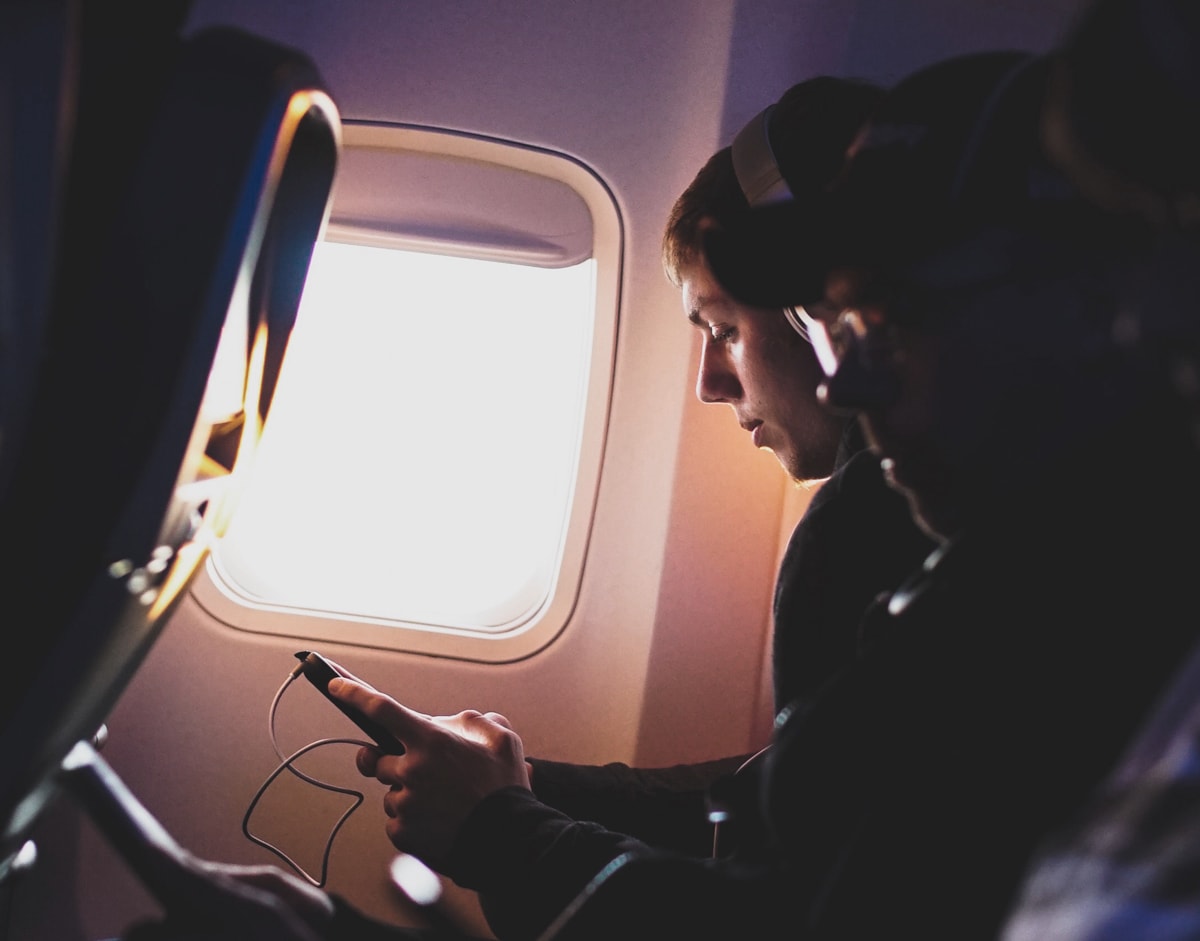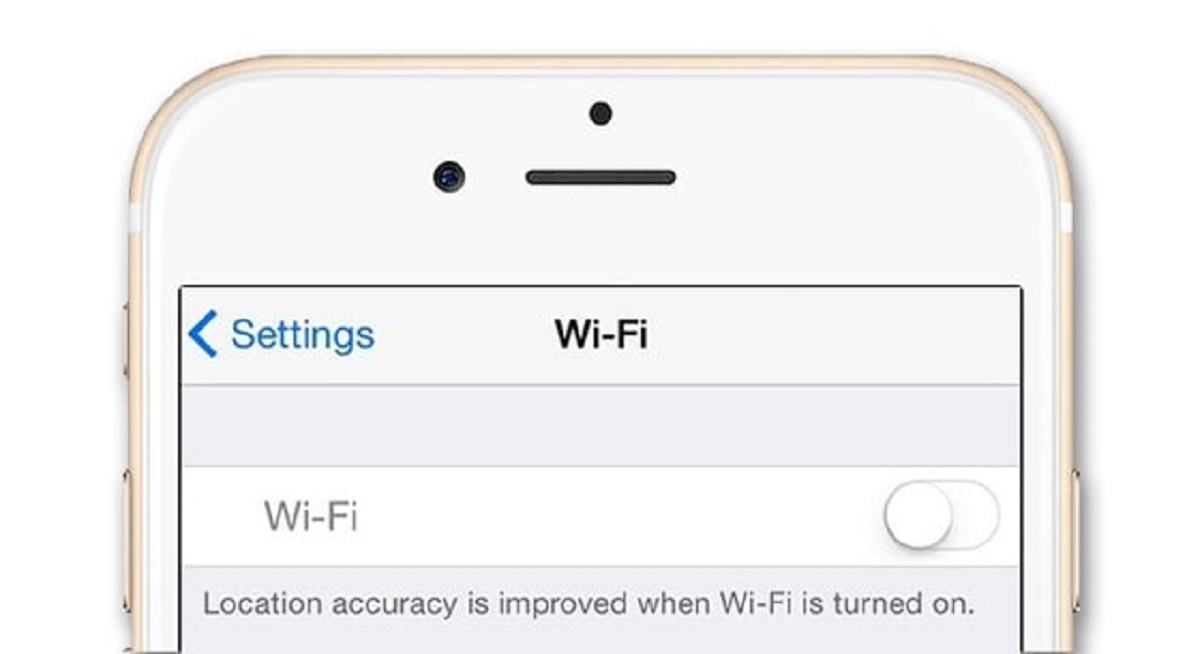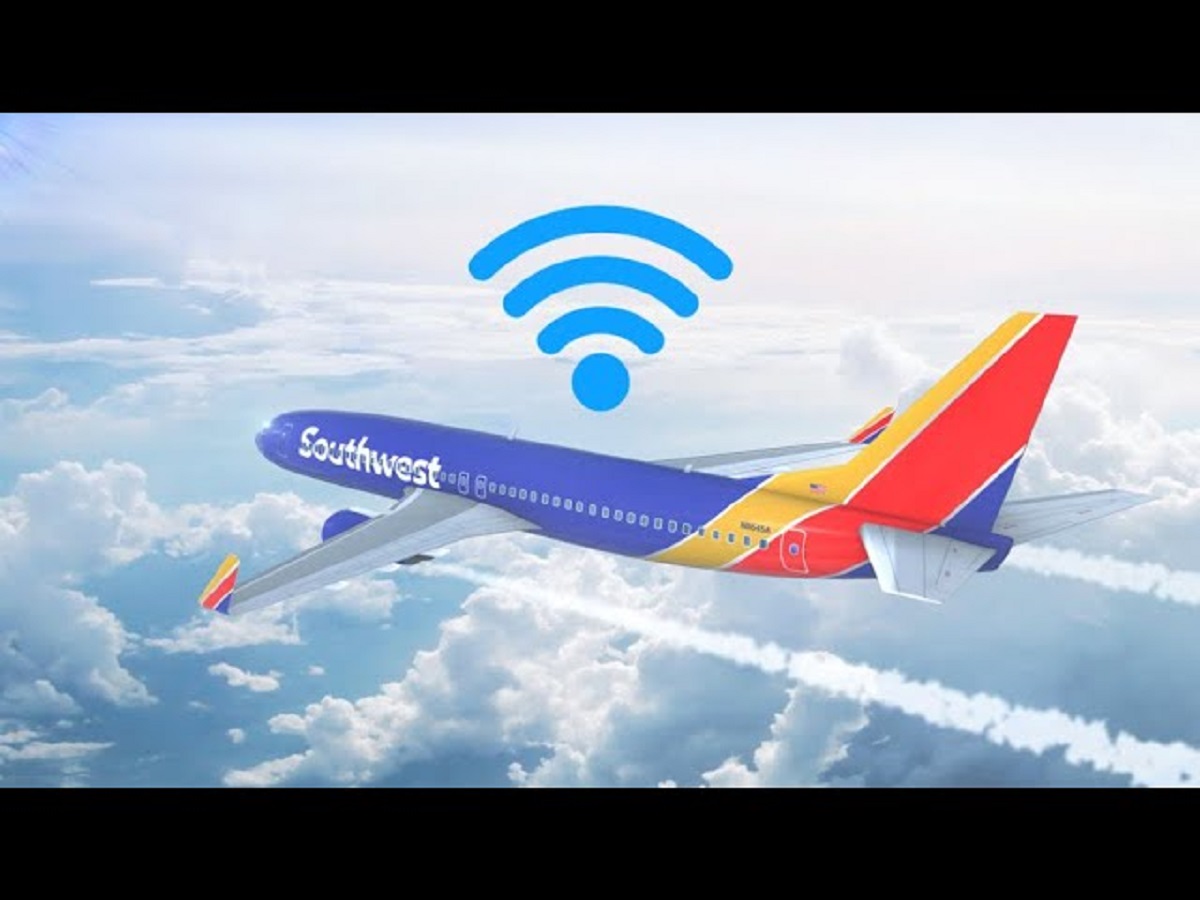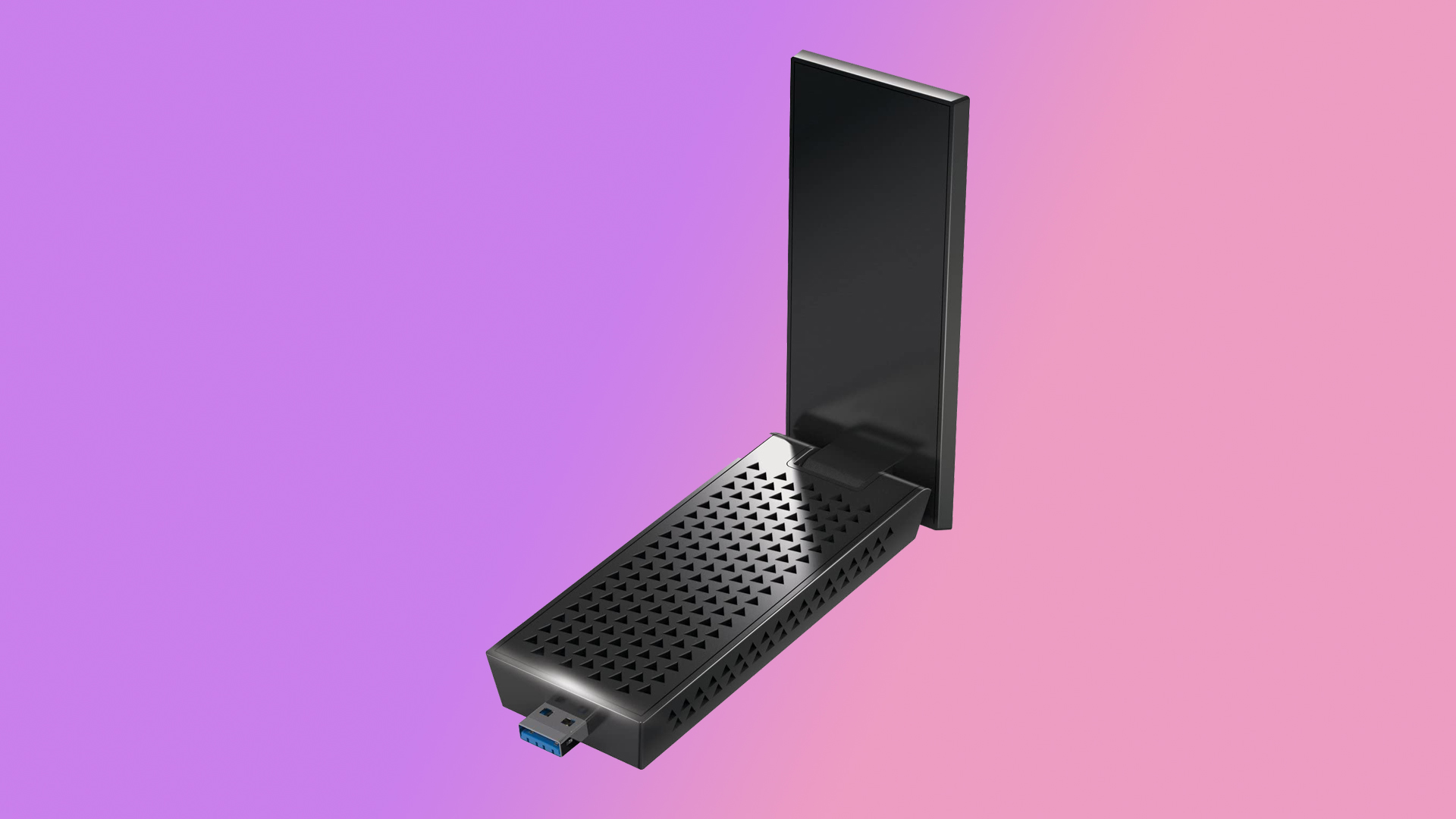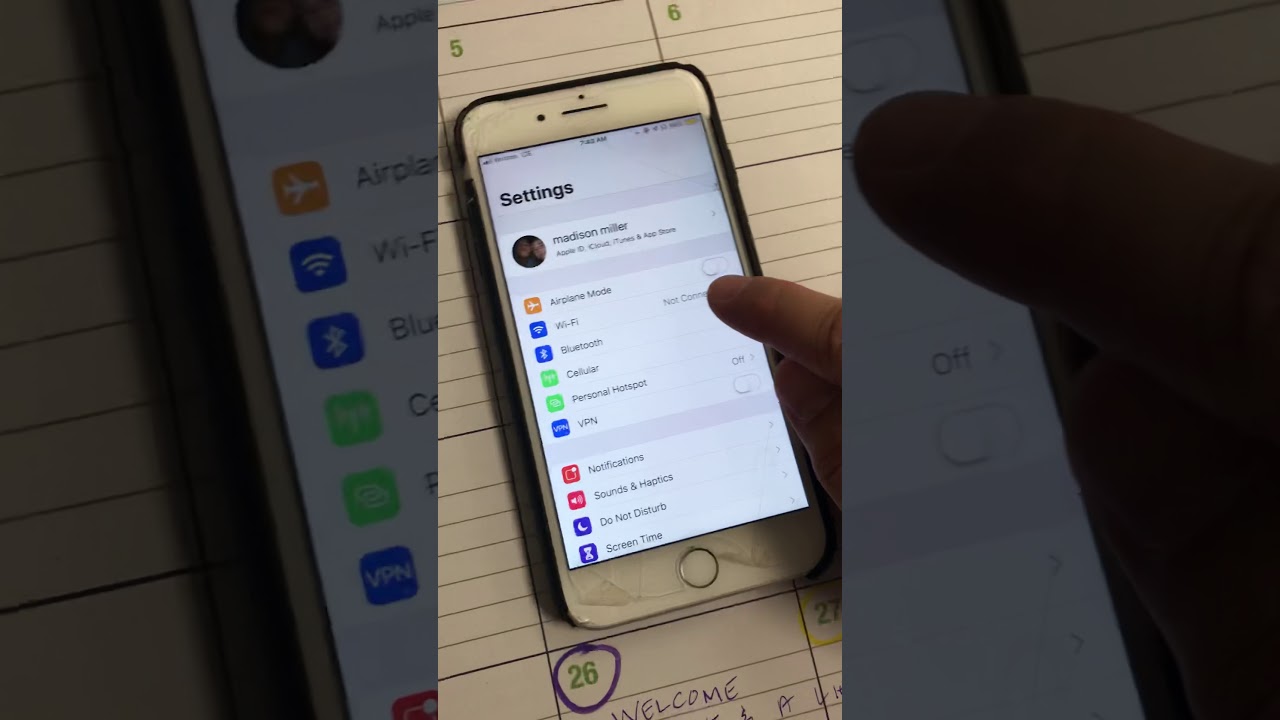Introduction
Nowadays, staying connected has become an essential part of our lives, even when we are thousands of feet in the air. As technology continues to advance, so does the demand for in-flight wifi on airplanes. Whether you’re catching up on work, scrolling through social media, or simply enjoying your favorite online content, having internet access during a flight can make the journey more enjoyable and productive.
In this article, we will explore the fascinating world of in-flight wifi and learn how it works. We’ll delve into the basics of in-flight wifi systems, the different technologies used, and the challenges that come with providing internet access at such high altitudes. So, fasten your seatbelts and prepare for a virtual tour of the technical aspects that enable wifi connectivity during your air travel.
Before we delve into the complexities of in-flight wifi, it’s important to understand the increasing expectations and demands of modern travelers. In an era where instant connectivity has become the norm, being able to stay connected even when flying at 30,000 feet is no longer a luxury, but an expectation.
With the rapid expansion of the digital age, people are more reliant on their smartphones, laptops, and other devices to communicate, work, and be entertained. The need for uninterrupted connectivity has driven airlines to invest in advanced technology to provide wifi services onboard their aircraft.
Airlines understand that offering in-flight wifi is a major competitive advantage. It can attract passengers and potentially increase customer loyalty. Whether it’s for business or leisure, having the ability to access the internet during a flight has become a significant factor for travelers when choosing their flights.
In the following sections, we will explore the technical aspects of in-flight wifi, the different systems used, and the challenges faced by airlines in providing seamless connectivity to passengers. So, get ready to dive into the world of in-flight wifi and discover the magic behind staying connected while soaring in the sky.
How Does Wifi in Airplane Work?
Have you ever wondered how you can connect to wifi while soaring through the skies? In-flight wifi operates on a different technology compared to the Internet we typically use on the ground. Let’s take a closer look at how in-flight wifi works.
When you’re on an airplane with wifi capabilities, the aircraft is equipped with either a satellite-based or ground-based system to provide internet access. These systems utilize radio signals to establish a connection between the plane and the ground.
Let’s begin with satellite-based systems. In this setup, the airplane has an antenna installed on its exterior, which communicates with satellites in orbit around the Earth. These satellites act as intermediaries, transmitting data between the airplane and the ground network. The airplane’s antenna receives and sends signals to the satellites, allowing passengers to connect to the internet.
On the other hand, ground-based systems work by establishing a connection between the airplane and cellular towers on the ground. Similar to how our smartphones connect to cell towers for internet access, the airplane’s antenna communicates with ground-based towers to provide wifi signals to passengers. These towers are often located near airports, enabling a seamless transition between ground-based and satellite-based systems.
Now that we understand the basic infrastructure of in-flight wifi, let’s explore how passengers can access it. Once the airplane is equipped with the appropriate technology, the wifi system is activated, and passengers can connect their devices to the onboard network. This can be done by selecting the airplane’s wifi network and entering the provided credentials, usually in the form of a passcode or username and password.
It’s important to note that in-flight wifi connectivity may not be available throughout the entire duration of a flight. The availability of internet access depends on various factors, including the airline, the type of aircraft, and the flight route. Some airlines offer wifi service for the entire duration of the flight, while others may only provide it during specific phases, such as cruising altitude.
Furthermore, in-flight wifi can be limited in terms of speed and bandwidth due to the challenges associated with providing internet access at high altitudes. The limited bandwidth is distributed among the passengers on the plane, and as more people connect to the wifi network, the speed may decrease.
Despite these limitations, in-flight wifi undoubtedly enhances the overall travel experience for many passengers. It allows them to stay connected, catch up on work, communicate with loved ones, and indulge in their preferred online activities, even when they’re thousands of feet above the ground.
Now that we’ve explored the workings of in-flight wifi, let’s move on to understanding the differences between satellite-based and ground-based systems, and the challenges faced in providing wifi connectivity at high altitudes.
The Basics of In-Flight Wifi
In-flight wifi is a marvel of technology that allows passengers to stay connected during their flights. To understand how it works, let’s delve into the basics of in-flight wifi systems and the components involved.
The main components of an in-flight wifi system include the aircraft’s antenna, the onboard router, and the satellite or ground-based network. The aircraft’s antenna is responsible for establishing a connection with either satellites or ground-based towers, depending on the system used. It sends and receives signals, enabling passengers to access the internet.
The onboard router plays a crucial role in managing the wifi network within the airplane. It routes the data traffic between the passengers’ devices and the ground network or satellite. The onboard router is responsible for distributing the limited bandwidth available among the connected devices. It also handles security measures, such as encryption and firewall protection, to ensure a safe browsing experience for passengers.
Now, let’s explore the different technologies and systems used in providing in-flight wifi. As mentioned earlier, there are two main types of systems: satellite-based and ground-based.
Satellite-based systems rely on a network of satellites orbiting the Earth. The aircraft’s antenna communicates with these satellites, establishing a high-speed internet connection. This type of system is suitable for long-haul flights, where airplanes are often out of range of ground-based towers. Satellite-based systems can provide internet coverage even over remote areas, such as over oceans or deserts.
On the other hand, ground-based systems utilize cellular towers on the ground to provide internet access. The aircraft’s antenna connects to these towers, which then route the data to and from the airplane. Ground-based systems are more commonly used in domestic or shorter flights, as they require the airplane to be within range of the ground-based towers.
In terms of speed and bandwidth, in-flight wifi may not offer the same performance as land-based networks. The limited bandwidth is shared among the passengers on the plane, and as more people connect to the wifi network, the speed may decrease. Additionally, the speed may also be affected by the number of active users and the available capacity of the satellite or ground-based network.
It’s worth noting that in-flight wifi networks often have certain restrictions in place to ensure a smooth and secure browsing experience for all passengers. These restrictions may include blocking certain websites, limiting access to streaming services, and prohibiting large file downloads. These measures are in place to manage network congestion and ensure fair usage among all users.
As technology continues to advance, we can expect improvements in the speed, coverage, and availability of in-flight wifi. Airlines and technology providers are constantly working on enhancing the in-flight connectivity experience to meet the increasing demands of passengers who rely on internet access during their travel.
Now that we’ve explored the basics of in-flight wifi systems, let’s continue our journey to understand the differences between satellite-based and ground-based systems, as well as the challenges associated with providing wifi connectivity on airplanes.
Satellite vs. Ground-Based Systems
When it comes to providing in-flight wifi, there are two main types of systems: satellite-based and ground-based. Both systems have their advantages and limitations, and understanding their differences can shed light on the complexities of in-flight connectivity.
Satellite-based systems rely on a network of satellites orbiting the Earth. These satellites act as intermediaries between the aircraft and the ground network. The airplane’s antenna communicates with the satellites, allowing passengers to access the internet. This type of system is especially beneficial for long-haul flights where airplanes may be out of range of ground-based towers for extended periods.
One of the biggest advantages of satellite-based systems is their ability to provide global coverage. Since the satellites are positioned in space and can communicate with multiple ground stations, connectivity can be maintained even over remote areas, such as oceans or deserts. This makes satellite-based systems ideal for international flights or routes that traverse areas with limited ground-based infrastructure.
However, satellite-based systems also have their limitations. The high altitude of the satellites and the distance they need to cover introduces a delay in the data transmission, creating what is commonly known as “satellite lag” or latency. This lag can impact real-time activities such as video conferencing or online gaming. Additionally, the bandwidth available on satellite-based systems may not be as high as that of ground-based systems, and the speed can be affected by the number of active users and the available capacity of the satellites.
On the other hand, ground-based systems use cellular towers on the ground to establish a connection with the aircraft. The airplane’s antenna communicates with these towers, allowing passengers to access the internet. Ground-based systems are more commonly used in domestic or shorter flights where the airplane remains within range of the ground-based towers.
One of the significant advantages of ground-based systems is their lower latency compared to satellite-based systems. Since the distance between the airplane and the ground-based tower is much shorter, the data transmission delay is significantly reduced. This makes ground-based systems more suitable for real-time applications that require low latency, such as video streaming or VoIP calls.
However, ground-based systems do have some limitations. The coverage area is limited to the range of the ground-based towers, which means airplanes flying over remote areas or oceans may not have access to ground-based networks. This issue can be mitigated by combining ground-based and satellite-based systems, allowing seamless connectivity transitions as the aircraft moves in and out of ground-based coverage areas.
Ultimately, the choice between satellite-based and ground-based systems depends on various factors, including the airline’s route network, the type of aircraft, and the passenger demands. Some airlines opt for a hybrid approach, incorporating both satellite-based and ground-based systems to ensure reliable and consistent in-flight wifi connectivity throughout their routes.
Now that we’ve explored the differences between satellite-based and ground-based systems, let’s move on to understanding how passengers can access wifi on an airplane.
Accessing Wifi on a Plane
Want to stay connected while flying? Accessing wifi on a plane is easier than you might think. Let’s explore how passengers can connect to the in-flight wifi network and enjoy internet access during their flight.
Once onboard an airplane that offers wifi connectivity, passengers can connect to the wifi network using their devices, such as smartphones, laptops, or tablets. The airline will provide instructions on how to connect to the wifi network, usually displayed on seatback screens or mentioned by the cabin crew during the pre-flight announcements.
Connecting to the wifi network typically involves a few simple steps. Passengers will need to navigate to the device’s wifi settings and select the airplane’s wifi network from the available networks list. The network name is often provided by the airline, such as “AirlineWifi” or a similar name.
After selecting the wifi network, passengers may be prompted to enter the credentials to access the internet. These credentials can include a passcode, a unique username and password, or even a credit card payment for certain airlines that offer paid wifi services. The instructions for obtaining the necessary credentials will be provided by the airline.
Once the credentials are entered or the payment is processed, passengers should be connected to the in-flight wifi network. They can now enjoy internet access just like they would at a coffee shop or their home network. They can browse the web, check emails, use social media, or stream their favorite content, depending on the capabilities and limitations of the in-flight wifi service.
It’s important to note that in-flight wifi service may have certain restrictions in place to manage network usage and ensure a reliable connection for all users. These restrictions can include limiting access to certain websites or blocking streaming services to prevent excessive bandwidth usage. Passengers should familiarize themselves with any guidelines or limitations communicated by the airline to have a smooth browsing experience.
In some cases, the airline may offer different wifi packages to cater to different passenger needs. These packages can include options for shorter access durations or higher data allowances, allowing passengers to choose the package that best suits their requirements. The pricing and package details will be provided by the airline.
As in-flight wifi technology continues to evolve, we can expect improvements and advancements that make the connection process even more seamless and convenient for passengers. Airlines and technology providers are continuously working to enhance the in-flight wifi experience, providing faster and more reliable internet access to meet the growing demands of passengers.
Now that we know how to access wifi on a plane, let’s uncover the challenges associated with providing in-flight connectivity and the advantages and disadvantages of in-flight wifi services.
The Challenges of In-Flight Connectivity
Providing in-flight connectivity comes with its fair share of challenges. The unique environment of an airplane presents several obstacles that need to be overcome to ensure a seamless and reliable internet connection for passengers. Let’s explore some of the key challenges of in-flight connectivity.
One significant challenge is the high altitude at which airplanes fly. At cruising altitude, airplanes are often above the range of terrestrial cell towers, making it difficult to establish a direct ground-based connection. This limitation led to the development of satellite-based systems that rely on communication with satellites in orbit. However, satellite-based systems can introduce latency and limited bandwidth due to the longer distance between the airplane and the satellites.
Another challenge is the limited available bandwidth that needs to be shared among the passengers on the plane. As more passengers connect to the in-flight wifi network, the available bandwidth is distributed among an increasing number of users, potentially leading to slower internet speeds. Airlines have to manage this bandwidth limitation to ensure a fair and satisfactory browsing experience for all passengers during the flight.
In addition to the technical challenges, another obstacle to in-flight connectivity is the regulatory and certification requirements. Airlines must adhere to stringent regulations and safety standards when it comes to implementing wifi systems on their aircraft. This involves testing, certification, and ensuring compliance with various aviation authorities to guarantee the safety of the aircraft and its passengers.
The unique anatomy of airplanes also poses challenges for installing and maintaining the necessary equipment for in-flight connectivity. The limited space and weight requirements on an aircraft add complexity to the installation process. Moreover, since airplanes are constantly in motion, the equipment must be sturdy enough to withstand vibrations, turbulence, and extreme temperature variations without compromising its functionality.
Additionally, the cost associated with providing in-flight connectivity can be a challenge for airlines. The installation of the required hardware and the ongoing maintenance and certification processes can be expensive. Airlines must carefully consider the investment required to offer wifi services and weigh it against the potential benefits, such as increased customer satisfaction and loyalty.
Despite these challenges, advancements in technology and the increasing demand from passengers have pushed airlines and technology providers to find innovative solutions. New satellite constellations, improved antenna designs, and optimized network management systems are being developed to overcome these challenges and provide a better in-flight connectivity experience.
In the next section, we will delve into the advantages and disadvantages of in-flight wifi services, highlighting the benefits and considerations for passengers who opt to stay connected during their flights.
Advantages and Disadvantages of In-Flight Wifi
In-flight wifi has become a sought-after amenity for many travelers. However, like any technology, it comes with its own set of advantages and disadvantages. Let’s explore the pros and cons of in-flight wifi services.
Advantages of In-Flight Wifi:
- Productivity: In-flight wifi allows passengers to stay connected and be productive during their flight. Business travelers can catch up on work, respond to emails, and even participate in video conferences. Students and professionals alike can utilize the internet to research, study, or collaborate on projects.
- Entertainment: Passengers can enjoy a wide range of entertainment options while in the air. They can stream movies and TV shows, listen to music, or engage in online gaming. In-flight wifi keeps passengers entertained throughout their journey, making flights more enjoyable and less monotonous.
- Communication: With in-flight wifi, passengers can stay connected with their loved ones or colleagues. They can make calls, send messages, or video chat, keeping them connected even when miles above the ground.
- Information and Updates: In-flight wifi allows passengers to access real-time information and updates. They can stay updated with news, weather conditions, and even check flight statuses. This enables passengers to plan ahead or stay informed during their journey.
- Travel Convenience: In-flight wifi enhances the overall travel experience by providing access to useful travel-related services. Passengers can book accommodations, plan their itinerary, and access maps or navigation tools, all while in the air.
Disadvantages of In-Flight Wifi:
- Cost: In-flight wifi services are often not provided for free. Airlines may charge a fee for wifi access, or they may offer different pricing packages based on the duration or data usage. This additional cost can be a disadvantage, especially for budget-conscious travelers.
- Speed and Reliability: In-flight wifi may not offer the same speed and reliability as land-based networks. The limited bandwidth and the number of active users can result in slower speeds and occasional dropouts. However, advancements in technology are continuously improving the speed and stability of in-flight wifi connections.
- Privacy and Security: Connecting to public wifi networks always raises concerns about privacy and security. While airlines take measures to secure their in-flight wifi networks, passengers should still exercise caution when accessing sensitive information or conducting financial transactions while connected to in-flight wifi.
- Potential Distractions: In-flight wifi can open the door to countless distractions. Passengers may become consumed by their devices and lose focus on the flight experience itself. This can be a disadvantage for those seeking a peaceful and relaxing journey.
- Physical Discomfort: For travelers who prefer to rest during a flight, the presence of in-flight wifi and its associated activities can cause disruptions in the cabin. Bright screens, the sound of video calls, or typing noises from neighboring passengers using wifi can lead to disturbances and potential discomfort.
Despite the disadvantages, the advantages of in-flight wifi often outweigh the drawbacks for a vast majority of travelers. The ability to stay connected, productive, and entertained during a flight offers convenience and enhances the overall travel experience.
In the next section, we will take a glimpse into the future of in-flight wifi and discuss the potential advancements and improvements that lie ahead.
The Future of In-Flight Wifi
The world of in-flight wifi is constantly evolving, driven by advancements in technology and the growing demand for connectivity during air travel. As we look ahead, let’s explore some potential advancements and improvements that could shape the future of in-flight wifi.
Increased Speed and Bandwidth: One of the primary areas of focus for the future of in-flight wifi is improving the speed and bandwidth of the connection. As technology progresses, we can expect faster internet speeds and increased capacity, allowing passengers to enjoy a more seamless browsing experience. This could enable bandwidth-hungry applications such as high-definition video streaming or virtual reality experiences during flights.
Lower Latency: Addressing the issue of latency, or the delay in data transmission, will continue to be an area of improvement. The goal is to minimize the lag between sending and receiving data, making in-flight wifi more suitable for real-time applications like video conferencing or online gaming. New technologies and algorithms will be developed to optimize data transmission and reduce latency.
Integration of 5G Technology: The rollout of 5G networks opens up new possibilities for in-flight connectivity. As 5G technology expands, it may be integrated into in-flight wifi systems, providing even faster speeds and lower latency. This could significantly enhance the overall browsing experience and open doors to new applications and services onboard aircraft.
Enhanced Coverage and Availability: Efforts will continue to expand the coverage and availability of in-flight wifi services. As more satellites are deployed and ground-based networks improve, the goal is to offer uninterrupted connectivity across a larger number of flight routes, including those that traverse remote areas like oceans or polar regions.
Improved Network Management: Managing network congestion and distributing bandwidth efficiently will be crucial in the future of in-flight wifi. Advanced network management systems will be developed to ensure a fair allocation of bandwidth among passengers and optimize the overall network performance during peak usage times.
Enhanced Security and Privacy Measures: The future of in-flight wifi will also focus on improving the security and privacy of passengers’ connections. Robust encryption protocols, firewalls, and advanced security measures will be implemented to protect users’ data and personal information. Continued efforts will be made to ensure that in-flight wifi networks are as secure as possible.
Seamless Integration with Personal Devices: The future of in-flight wifi will likely involve seamless integration with passengers’ personal devices. This could include enhanced connectivity features for smartphones, tablets, and laptops, allowing for a more intuitive and user-friendly experience. Passengers will be able to access the in-flight wifi network effortlessly and enjoy a seamless transition between their personal devices and the onboard services.
These advancements and improvements are not far-fetched dreams. Airlines and technology providers are actively investing in research and development to make the future of in-flight wifi a reality. The demand for connectivity during air travel will continue to drive innovations in this space, revolutionizing the way we stay connected while soaring through the skies.
Now that we have explored the potential future of in-flight wifi, let’s conclude our journey by summarizing the key insights we’ve gained.
Conclusion
In-flight wifi has transformed the way we stay connected during air travel, allowing passengers to work, communicate, and be entertained while flying. We have delved into the intricacies of in-flight wifi, understanding its working principles, the challenges it faces, and the advantages and disadvantages it brings. It is clear that the demand for in-flight connectivity will only continue to grow, and as technology advances, we can expect significant improvements in the future.
From the basics of in-flight wifi systems to the differences between satellite-based and ground-based networks, we have explored the infrastructure that enables passengers to access the internet while in the air. The ability to connect to wifi on a plane provides numerous advantages, such as increased productivity, entertainment options, and seamless communication with loved ones or colleagues.
However, in-flight wifi does come with its own set of challenges, including limited bandwidth, potentially slower speeds, and the need for robust security measures. These challenges are being addressed through ongoing technological advancements, regulatory compliance, and innovative solutions.
Looking ahead, the future of in-flight wifi holds exciting possibilities. We can anticipate faster speeds, lower latency, enhanced coverage, and improved network management. The integration of 5G technology, seamless device integration, and heightened security measures will further enhance the in-flight connectivity experience.
As airlines and technology providers continue to invest in research and development, the future of in-flight wifi will undoubtedly provide passengers with an even more seamless and satisfying connectivity experience.
So next time you find yourself onboard an airplane with wifi access, take a moment to appreciate the remarkable technology that enables you to be connected even at 30,000 feet. Whether it’s working on a project, catching up on your favorite shows, or simply staying connected with loved ones, in-flight wifi has become an indispensable part of the modern travel experience.
As we eagerly await the advancements and improvements in in-flight wifi technology, let us embrace the convenience, productivity, and entertainment it brings to our journeys, making air travel an even more connected and enjoyable experience.







